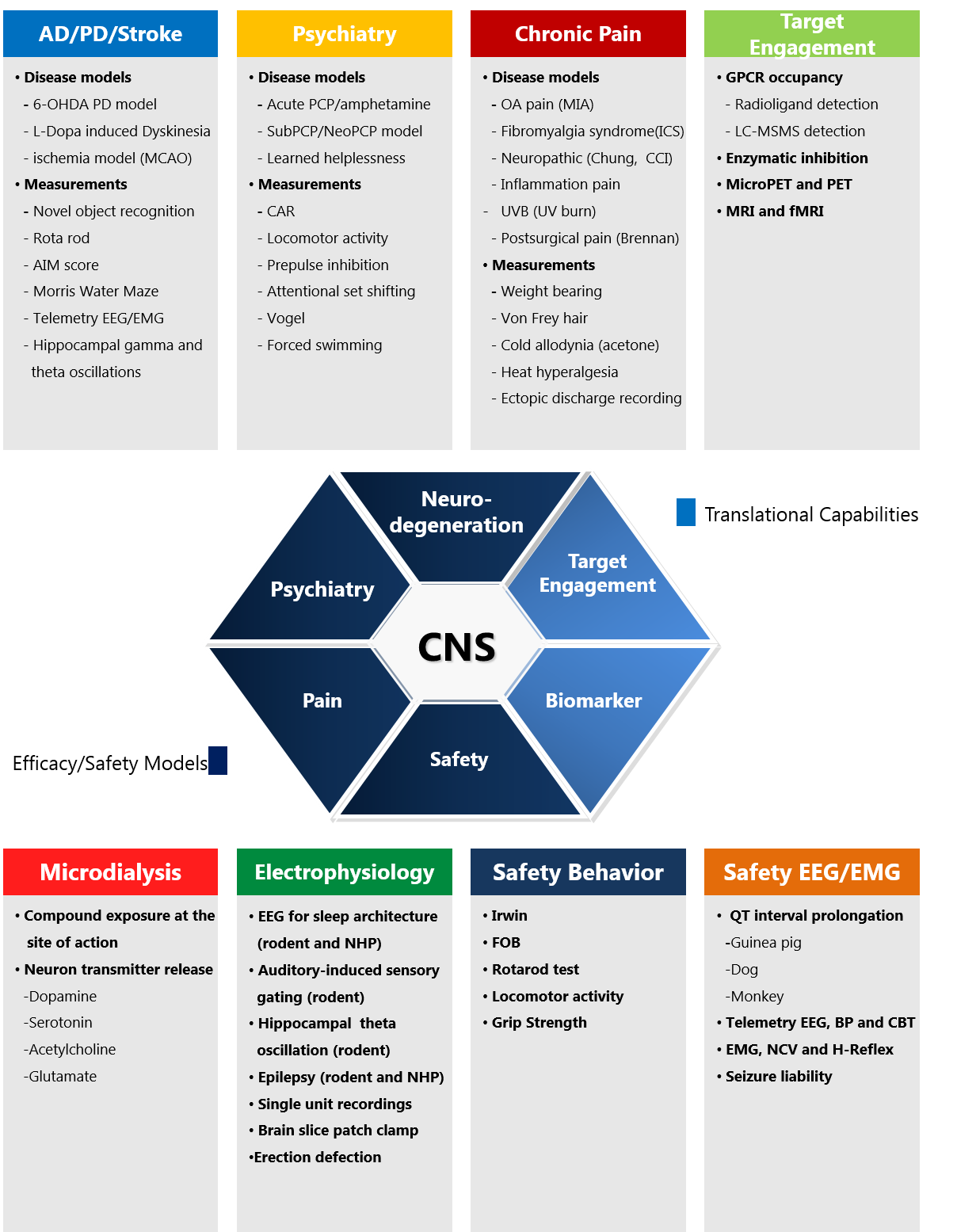网站维护
系统内容更新/升级中

The CNS & Pain Discovery team provides customer oriented integrated services within our AAALAC accredited animal facility and world class laboratories including a GLP standard laboratory. We strive for highest data quality, consistency, and maximal efficiency.

Due to the importance of translational science in CNS/pain drug discovery, we aim to set up the capability to help the success of clinical phase II. So far, we have developed a rat MIA model measured with weight-bearing which is considered to be the most relevant animal model for osteoarthritis. A receptor occupancy method was also developed to provide target engagement evidence.
Besides translational science, we have a built broad spectrum of animal models for CNS diseases and chronic pain to support a systematic approach in vivo drug discovery and development with multiple endpoints including: behavior, efficacy, PK/PD, safety, biomarker assays, and pathology.